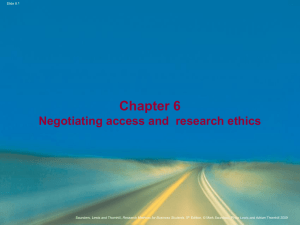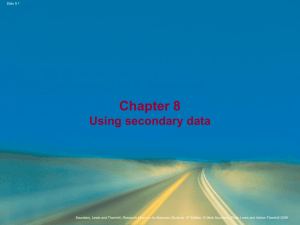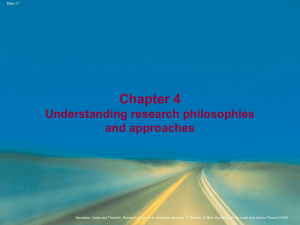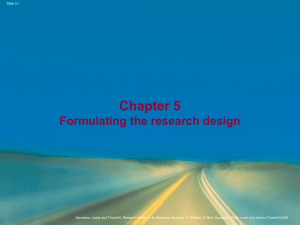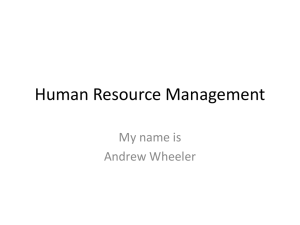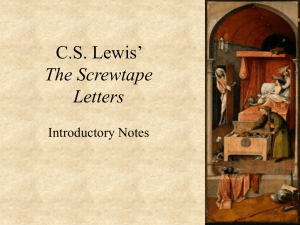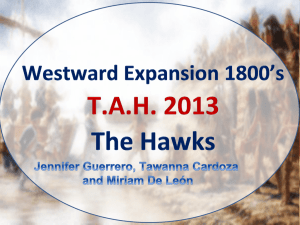PP_Saunders_Chap_10
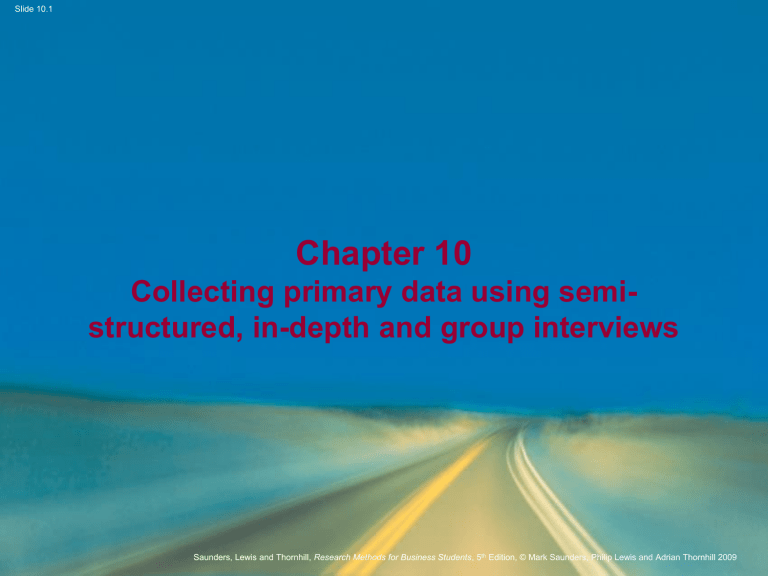
Slide 10.1
Chapter 10
Collecting primary data using semistructured, in-depth and group interviews
Saunders, Lewis and Thornhill, Research Methods for Business Students , 5 th Edition, © Mark Saunders, Philip Lewis and Adrian Thornhill 2009
Slide 10.2
Research interviews
Definition
‘An interview is a purposeful discussion between two or more people’
Kahn and Cannell (1957)
Types of interview used in research
Semi-structured
In-depth
Structured
Group
Saunders et al . (2009)
Saunders, Lewis and Thornhill, Research Methods for Business Students , 5 th Edition, © Mark Saunders, Philip Lewis and Adrian Thornhill 2009
Slide 10.3
Research purpose and strategy (1)
Forms of interview
Saunders et al . (2009)
Figure 10.1 Forms of interview
Saunders, Lewis and Thornhill, Research Methods for Business Students , 5 th Edition, © Mark Saunders, Philip Lewis and Adrian Thornhill 2009
Slide 10.4
Positivism Constructionism
Chapter 10
Chapter 11
Saunders, Lewis and Thornhill, Research Methods for Business Students , 5 th Edition, © Mark Saunders, Philip Lewis and Adrian Thornhill 2009
Slide 10.5
Research purpose and strategy (2)
Uses of different types of interview in each of the main research categories
Saunders et al . (2009)
Table 10.1 Uses of different types of interview in each of the main research categories
Saunders, Lewis and Thornhill, Research Methods for Business Students , 5 th Edition, © Mark Saunders, Philip Lewis and Adrian Thornhill 2009
Slide 10.6
Non-standardised (qualitative) interviews
Four key aspects
• Purpose of the research
• Significance of establishing personal contact
• Nature of the data collection questions
• Time required and completeness of process
Saunders, Lewis and Thornhill, Research Methods for Business Students , 5 th Edition, © Mark Saunders, Philip Lewis and Adrian Thornhill 2009
Slide 10.7
Data quality (1)
Issues to consider
• Reliability
• Forms of bias
• Validity and generalisability
Saunders, Lewis and Thornhill, Research Methods for Business Students , 5 th Edition, © Mark Saunders, Philip Lewis and Adrian Thornhill 2009
Slide 10.8
Data quality (2)
The importance of preparation – the 5 Ps
‘ p rior p lanning p revents p oor p erformance’
Saunders et al . (2009)
Saunders, Lewis and Thornhill, Research Methods for Business Students , 5 th Edition, © Mark Saunders, Philip Lewis and Adrian Thornhill 2009
Slide 10.9
Interview preparation (1)
Associated issues
• Interviewer’s level of knowledge
• Level of information supplied to interviewees
• Creating an interview guide
• Appropriateness of location
Saunders, Lewis and Thornhill, Research Methods for Business Students , 5 th Edition, © Mark Saunders, Philip Lewis and Adrian Thornhill 2009
Slide 10.10
Interview preparation (2)
Associated issues
• Researcher’s appearance – dress code
• Shaping the interview - opening comments
• Approach to questioning – clarity and reducing bias
• Use of critical incident technique
Saunders, Lewis and Thornhill, Research Methods for Business Students , 5 th Edition, © Mark Saunders, Philip Lewis and Adrian Thornhill 2009
Slide 10.11
Interview preparation (3)
Associated issues
• Appropriate interviewer behaviour- verbal and nonverbal
• Attentive listening skills and testing understanding
• Approaches to data recording - notes and taperecording
• Cultural differences and bias
Saunders, Lewis and Thornhill, Research Methods for Business Students , 5 th Edition, © Mark Saunders, Philip Lewis and Adrian Thornhill 2009
Slide 10.12
Interview preparation (4)
Checklist Box 10.12
Complete the Checklist in Box 10.12
to help you prepare for your semi-structured or in-depth interview
Saunders et al . (2009)
Saunders, Lewis and Thornhill, Research Methods for Business Students , 5 th Edition, © Mark Saunders, Philip Lewis and Adrian Thornhill 2009
Slide 10.13
Interviewing competence (1)
Approaches to questioning
Open questions Probing questions
Specific and closed questions
Saunders, Lewis and Thornhill, Research Methods for Business Students , 5 th Edition, © Mark Saunders, Philip Lewis and Adrian Thornhill 2009
Slide 10.14
Interviewing competence (2)
Advantages and disadvantages of audiorecording interviews
Saunders et al . (2009)
Table 10.3 Advantages and disadvantages of audio-recording the interview
Saunders, Lewis and Thornhill, Research Methods for Business Students , 5 th Edition, © Mark Saunders, Philip Lewis and Adrian Thornhill 2009
Slide 10.15
Interviewing competence (3)
Other issues to consider
• Dealing with difficult participants –Table 10.2
• Managing resources – logistics and time
• Obtaining participants’ permission for interview records (written and taped)
Saunders, Lewis and Thornhill, Research Methods for Business Students , 5 th Edition, © Mark Saunders, Philip Lewis and Adrian Thornhill 2009
Slide 10.16
Interviewing competence (4)
Additional forms of interviews:
• Group interviews
• Focus groups
• Telephone interviews
• Internet and intra-net mediated interviews
Saunders, Lewis and Thornhill, Research Methods for Business Students , 5 th Edition, © Mark Saunders, Philip Lewis and Adrian Thornhill 2009
Slide 10.17
Interviewing competence (5)
Forms of electronic interviews
Saunders et al . (2009)
Figure 10.2 Forms of electronic interviews
Saunders, Lewis and Thornhill, Research Methods for Business Students , 5 th Edition, © Mark Saunders, Philip Lewis and Adrian Thornhill 2009
Slide 10.18
Summary: Chapter 10
• Use of non-standard (qualitative) interviews should generate rich and detailed data
• Different types of interview are useful for different research purposes
• Qualitative interviews are generally categorised as in-depth (structured) and semi-structured
• Research design may incorporate more than one type of interview
Saunders, Lewis and Thornhill, Research Methods for Business Students , 5 th Edition, © Mark Saunders, Philip Lewis and Adrian Thornhill 2009
Slide 10.19
Summary: Chapter 10
• Using qualitative interviews is related to the research strategy and data collection questions
• Establishing personal contact with subjects and the length of time required are significant factors
• Data quality issues, interviewer competence and resource management are important considerations
• Face-to-face (individual, group and focus group) and electronic interviews can all be advantageous
Saunders, Lewis and Thornhill, Research Methods for Business Students , 5 th Edition, © Mark Saunders, Philip Lewis and Adrian Thornhill 2009
